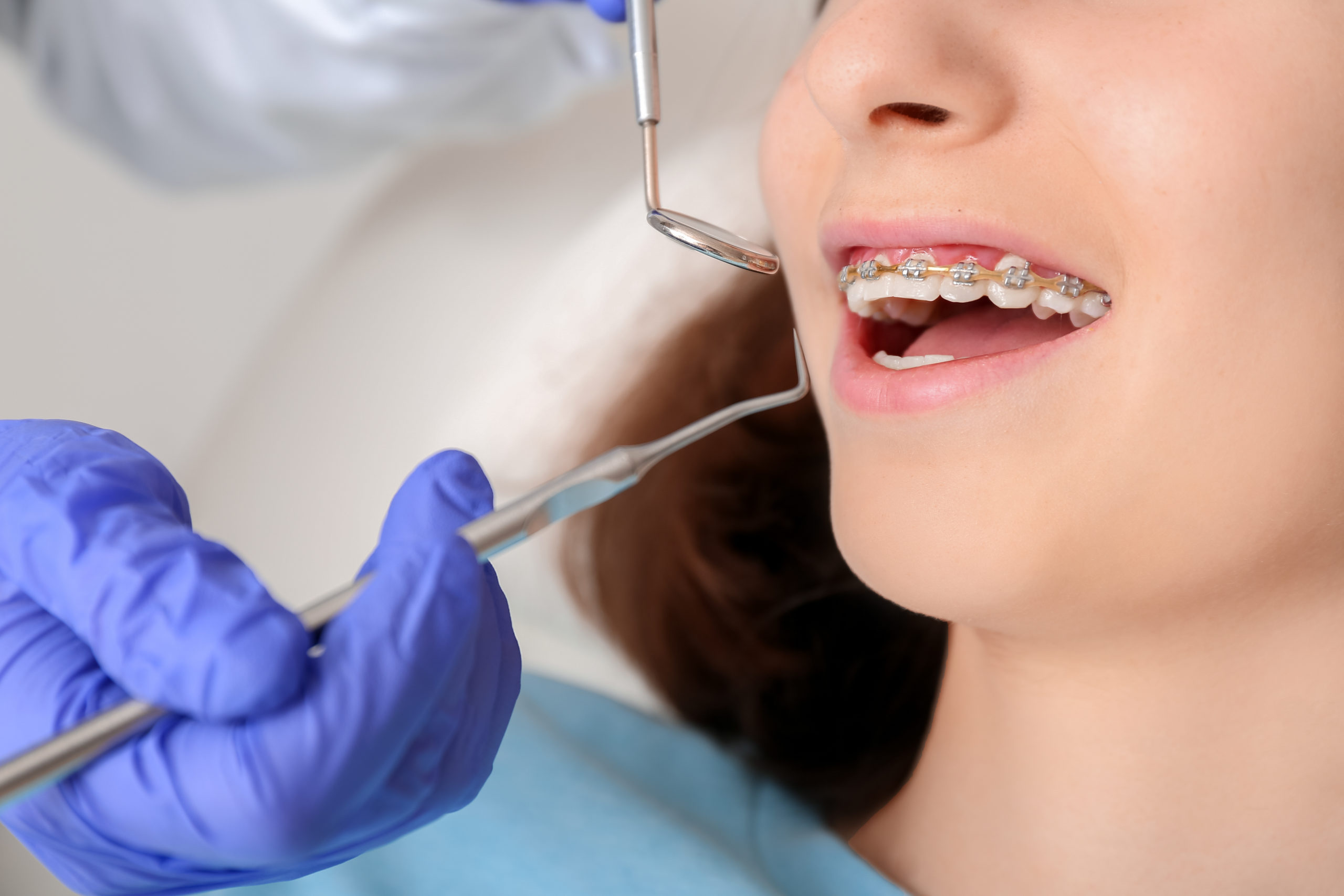Comprehensive Overview to Orthodontics Procedures for Correcting Dental Imbalances
Understanding the complexities of each treatment, including their mechanisms, advantages, and prospective downsides, is critical in making educated decisions regarding one's orthodontic therapy. As we browse with the detailed guide to orthodontic procedures for remedying dental imbalances, the elaborate information of each method will certainly unravel, losing light on the course toward a unified and functional dental placement.
Orthodontic Procedures Summary

Along with typical dental braces and clear aligners, orthodontists may additionally advise various other treatments like headgear, palatal expanders, or retainers to deal with specific positioning concerns (invisalign). These treatments are tailored per patient's one-of-a-kind needs and might involve a combination of treatments to accomplish the desired outcomes. Routine changes and tracking are essential components of orthodontic treatment to make certain progression gets on track and to make any kind of necessary modifications in the process. By undergoing orthodontic procedures, clients can not only attain a straighter smile but likewise enhance their general dental wellness and feature.
Traditional Dental Braces: Just How They Function
When thinking about orthodontic treatments for dental misalignments, typical braces stand out as a reliable approach for dealing with teeth placing. Traditional dental braces include braces, cords, and bands that collaborate to use continuous stress on the teeth, slowly relocating them into the wanted placement. The braces are connected to the teeth using a special adhesive, and the cords are threaded through the brackets. By adjusting the tension of the cables, orthodontists can regulate the direction and pressure put on each tooth, guiding them into correct placement over time.
As pressure is used to the teeth via the braces, the bone surrounding the teeth is improved to sustain the new tooth positions. Patients will certainly need normal modifications at the orthodontist's workplace to make sure the braces continue to apply the appropriate stress for efficient teeth motion.
Unnoticeable Aligners: Cons and pros
Unseen aligners use a discreet and hassle-free alternative to conventional dental braces for remedying oral imbalances. These clear, customized trays are essentially unnoticeable when used, making them an attractive choice for people looking for an extra visually pleasing orthodontic treatment. Among the primary benefits of undetectable aligners is their removability, enabling less complicated maintenance of oral hygiene contrasted to typical braces. Patients can eliminate the aligners prior to eating or cleaning their teeth, reducing the danger of food getting embeded the device and streamlining the cleaning procedure.

Surgical Orthodontic Options
Surgical interventions in orthodontics present practical choices for dealing with complex dental misalignments that may not be successfully fixed via conventional orthodontic treatments. While typical braces and unseen aligners can correct lots of orthodontic concerns, certain instances call for surgical intervention to achieve optimal outcomes. Surgical orthodontic options are typically recommended for serious malocclusions, considerable jaw discrepancies, and instances where the underlying bone structure requires modification to attain appropriate positioning.
One typical medical orthodontic treatment is orthognathic surgical procedure, which involves rearranging the jaws to remedy functional concerns such as trouble speaking or eating. This surgical procedure is usually done in cooperation with an orthodontist that helps straighten the teeth prior to and after the procedure. Surgical orthodontics might likewise entail treatments to expose affected teeth, remove excess periodontal tissue, or improve the jawbone to create a more harmonious face profile.
Before taking into consideration surgical orthodontic choices, people undergo a thorough assessment to establish the requirement and possible advantages of such interventions. invisalign. While surgical treatment useful link may seem overwhelming, visit this website it can considerably improve both the function and visual appeals of the smile in instances where conventional orthodontic therapies drop short
Retainers and Post-Treatment Care

Post-treatment care entails following the orthodontist's guidelines vigilantly. This might consist of proper oral health practices, attending follow-up appointments, and wearing the retainers as suggested. Failure to follow post-treatment care instructions can cause relapse, where the teeth gradually return in the direction of their initial placements. Regular retainer wear, great oral health, and routine oral exams are essential for maintaining the results attained with orthodontic surgery and ensuring the long-lasting security of the remedied oral alignment.
Final Thought
In conclusion, orthodontic procedures offer various alternatives for dealing with dental imbalances. Surgical orthodontic choices are available for extra serious imbalances. In general, orthodontic treatments can successfully improve dental health and wellness and aesthetic look.
As we navigate via the extensive guide to orthodontic procedures for dealing with dental misalignments, the complex information of each technique will unfold, dropping light on the path toward a useful and unified oral placement. - cumming orthodontist
One of the most common orthodontic treatments is the usage of dental braces, which are composed of steel braces and cables that apply mild pressure to progressively change teeth right into the wanted setting.When thinking about orthodontic therapies for oral misalignments, typical dental braces stand out as a time-tested approach for remedying teeth positioning. Furthermore, undetectable aligners might not be ideal for intricate orthodontic concerns that call for more substantial teeth activity, as they are commonly advised for light to modest cases. Retainers are customized orthodontic tools made to hold teeth in their remedied positions after the hop over to these guys completion of orthodontic treatment.
Comments on “Expert Cumming Braces and Aligners: What to Know Prior To You Check out”